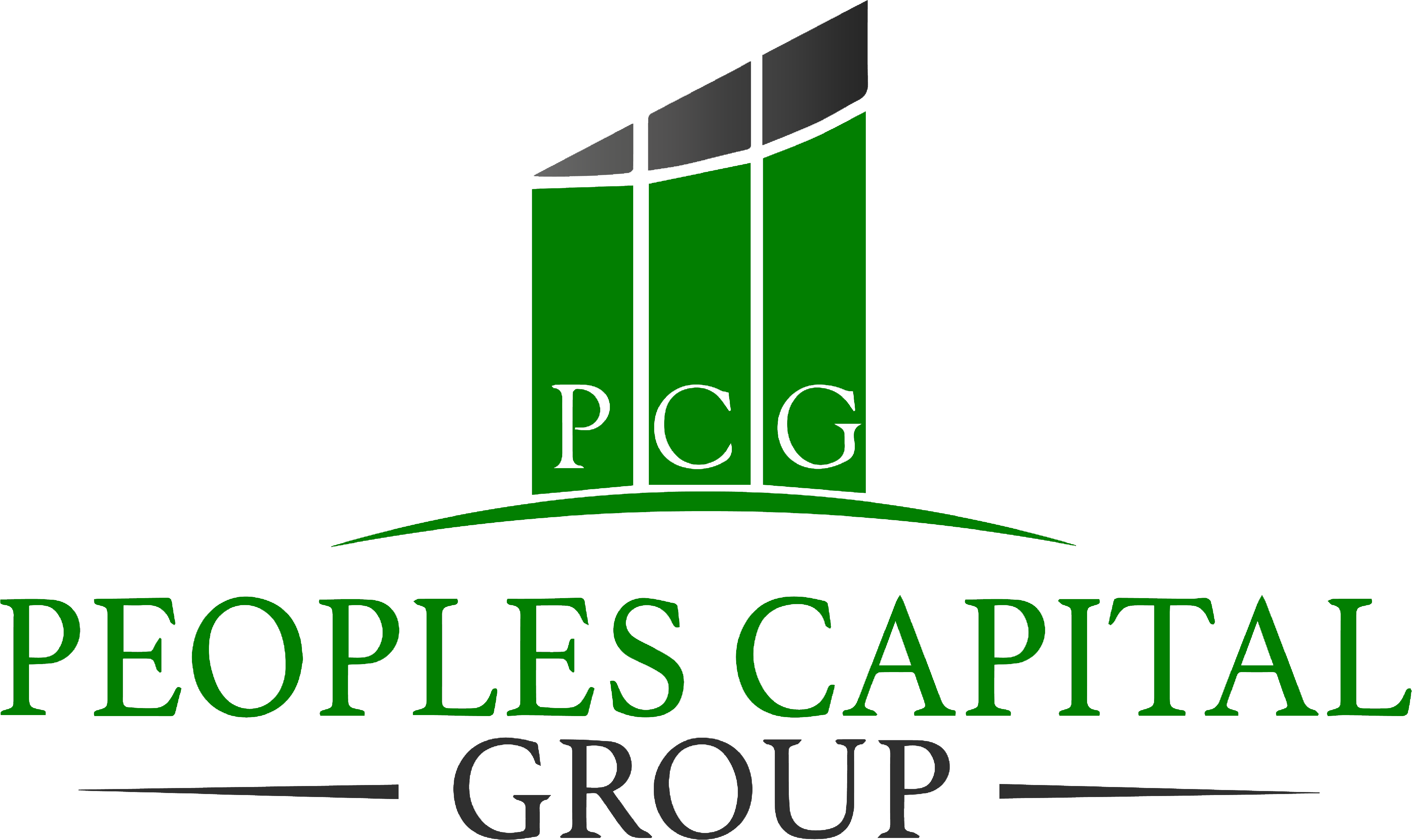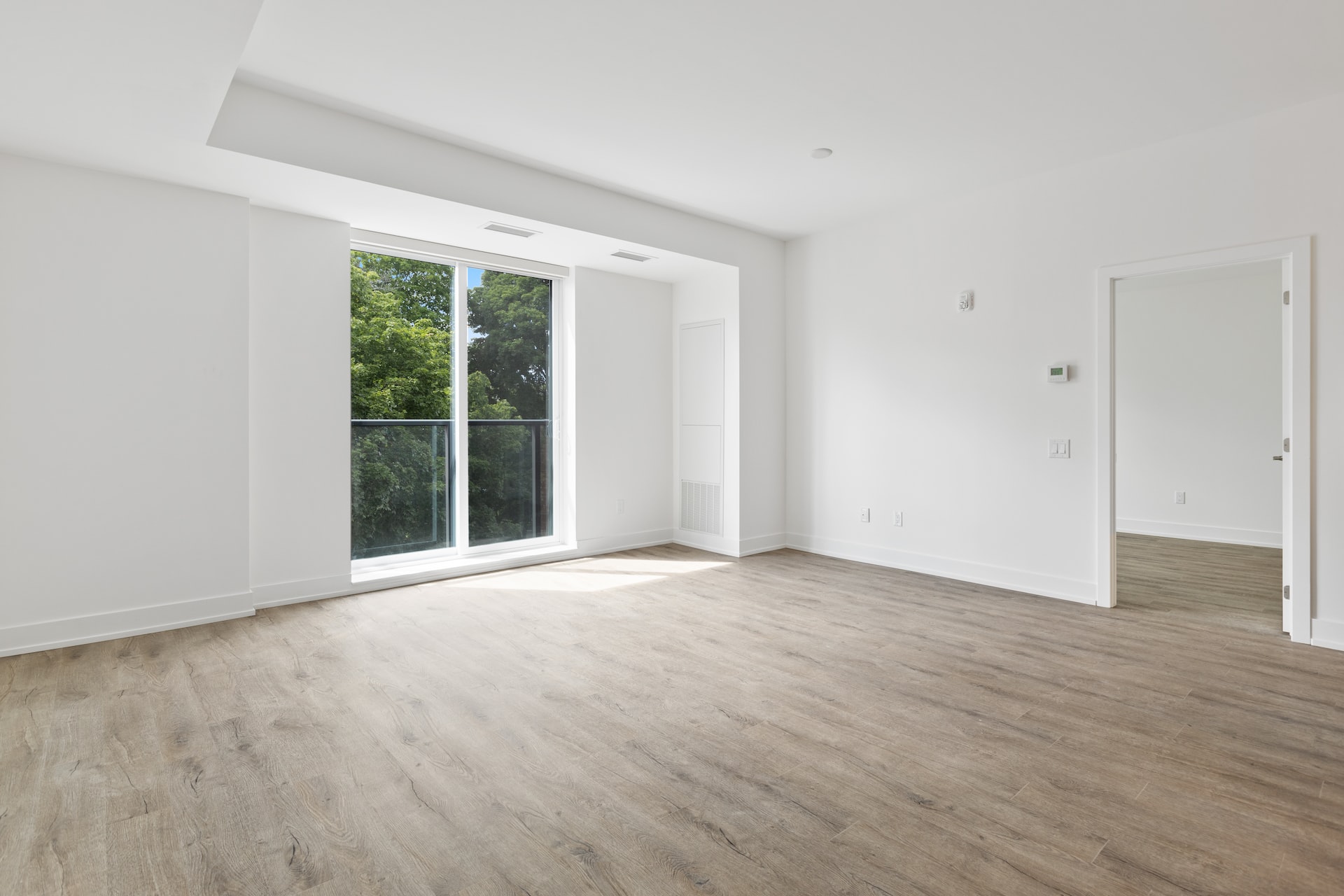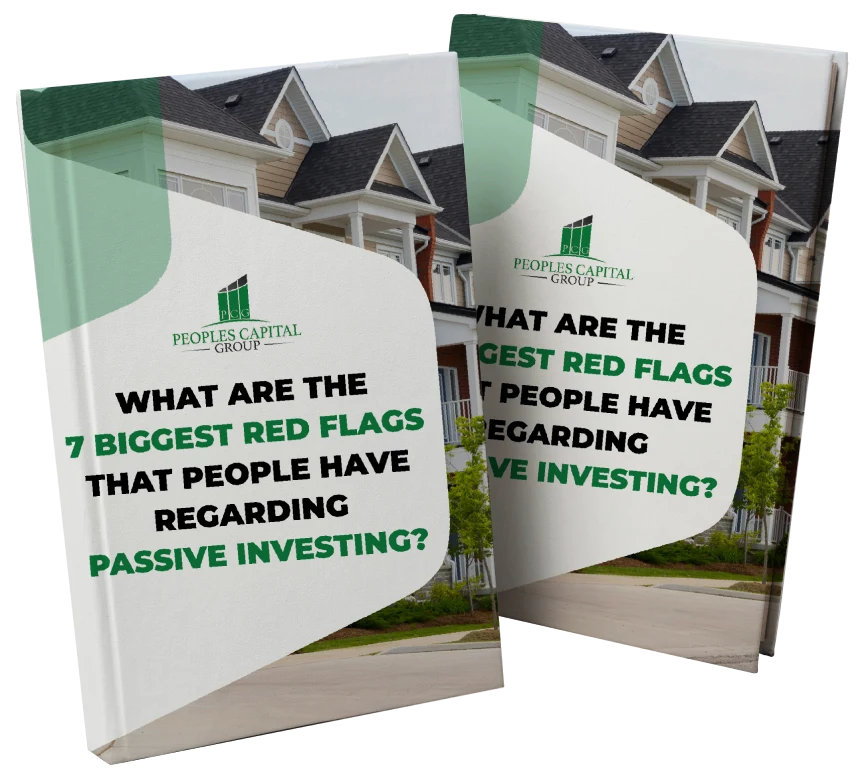If you’re a prospective property owner looking to purchase part or all of an apartment complex, you’re in good company. Every day, investors set their eyes on attractive apartment complexes, from suburban apartment complex construction projects to shimmering big-city towers.
At Peoples Capital Group, we understand the investor appeal of the apartment complex. Our real estate investment experts have helped clients at all stages, whether prospective owners of luxury apartments, investors in mid-rise buildings, or interested parties looking to develop land through apartment building construction.
What ALL Investors Need to Know About Apartment Buildings
It doesn’t matter if you’re totally new to apartment purchasing and apartment construction, or if you’ve spent decades investing and overseeing the process, without the right approach, you can run into numerous difficulties.
Cost overruns can become problematic, devastating investors’ dreams of potentially stunning and lucrative apartment complex construction projects.
Your initial budget may fall far short. Your local contractor or general contractor may be unreliable or inadequate. Vastly different costs can leave you scratching your head and losing your mind.
That’s why paying attention to an investment expert is key. With a sterling investment specialist behind you, you can invest in the apartment complex of your dreams.
There are many reasons investors flock to apartment buildings.
Apartment Buildings Can Scale Up
With apartment building investments, many typical real estate worries are drastically reduced. Because your income from a complex is reliable and durable, you can likely afford a property management company to handle much of the legwork.
You won’t have to spend time, effort, and money repairing and maintaining the problem, finding and managing tenants, and dealing with the day-to-day stressors. This means you can ultimately have more resources to expand your investments and diversify your portfolio.
An apartment complex investment specialist can facilitate this process.
Apartment Buildings Can Appreciate Rapidly
With single-family housing, appreciation typically only occurs when similar properties nearby appreciate. Multifamily property like an apartment building or complex is different. The value of an apartment structure is largely dependent on the rental income.
There are various ways to increase the rental income.
- Streamline maintenance of the building
- Renovate each single unit
- Expand the property
- Invest in other projects nearby
- Provide residential features (laundry rooms, valet, security personnel). Other features may include parking, drink and food dispensers, gyms, pools, and other amenities used by both residents and non-residents.
With the proper approach, investment, and diversification, an apartment building investor can significantly increase the average rent, attracting high-net-worth tenants.
Tax Benefits of Apartment Complex Investing
The various tax advantages in multi-family real estate can help you offset many expenses, costs, and fees associated with both apartment building construction and the overall cost.
These benefits can ensure that your apartment investment proves profitable and enduring.
Tax Deductions for Investment
You can deduct various expenses from your taxable rental income. These may include costs associated with maintaining, repairing, managing, and operating an apartment complex.
When investing in an apartment building, consider mortgage interests, maintenance costs, insurance fees, utility expenses, advertising and marketing, and more.
Passive Income Advantages
If you spend less than 500 hours on your investment business, you are not considered a real estate professional by the IRS. Thus, you end up paying passive income taxes instead of traditional income taxes.
This means you’ll generally enjoy lower rates, and your apartment building investment may not be a tax liability.
An investment specialist can help you capitalize on these important tax breaks, shelters, and write-offs.
Apartment Complex Depreciation
This top real estate tax shelter allows you to manage the many factors associated with quality degradation, wear and tear, and overall lifetime damages to property.
This tax deduction is a great way to offset other expenses.
1031 Exchange Advantages
A 1031 Exchange is a mechanism through the Internal Revenue Code that allows you to defer most or all your capital gains taxes. If you’re an apartment structure investor, you need to basically ‘exchange’ or swap a relinquished property for a new replacement property.
To qualify for a tax deferral, you should ensure both properties are being used for investing or business purposes and are within the U.S.
For a full tax deferral, the value of the new property must be equal to or greater than the value of the old property and all proceeds from the old property must be invested in the new replacement property.
Apartment Building Cash Flow
Unlike other investments, an apartment complex can generate reliable, robust income, month after month for years on end. The cash flow from an apartment building typically includes the monthly rents. Once expenses such as mortgages and maintenance costs are covered, you can keep the profit.
Another good thing about investing in this form of real estate, whether you have to worry about the apartment construction cost or don’t have to worry about construction costs, is the stability of the lease.
Stability of Apartment Complex Leases
Apartment units typically have 12-month leases, which almost guarantees a reliable passive income.
Rent prices are also very appreciation-friendly, meaning that if you enjoy just a marginal increase in rent prices, your return on investment can improve significantly. The expenses you may incur from vacancies can be made up through other tenants as well.
With apartment buildings now comprising over ⅓ of all households, these multi-family properties are a great consideration for any investor. For this reason, many builders and investors are considering building new apartment buildings.
This is not the case with other types of real estate investments.
The lucrative potential of apartments makes investing particularly attractive, even when the structure itself doesn’t exist! In some cases, the most lucrative investments may be for properties that haven’t been built yet.
Apartment Building Construction Costs
An investor may choose to build an apartment complex for a variety of reasons. As a historically profitable asset class, every apartment construction project has the potential to become a stable, profit-generating machine.
Why do people go through the hassles associated with buying, owning, building, and /or investing in apartments? Easy. Because the upside can be massive!
Whether the final product is a stunning mansion converted into an apartment building, or a contemporary skyscraper in a downtown district, you’re going to need to consider labor costs, the materials for actual construction, the square foot cost to build, the integrity of the job site, and any other expense, such as legal fees, that impacts costs.
Here are some of the main things to consider when investing in an apartment complex.
How Much Does It Cost to Build an Apartment Complex?
Before you build an apartment complex, you should have a firm idea of how much it might cost to build apartments just like the one you envision or anticipate. You must regularly communicate with any developer, architect, project manager, general contractor, and engineer on the job.
Generally speaking, you’re going to want the price of your apartment complex to be between 20% and 50% of the income generated. Just know that when you build an apartment complex, the costs can vary widely.
Costs Per Sq. Foot and Overall
So how much does it cost to build an apartment structure?
The industry standard is calculated per square foot. You will typically spend anywhere from just under $100 to just over $400 per sq. ft. The national average cost per square foot for an apartment building is roughly $270.
According to industry statistics, the average cost to build an apartment complex is $4.5 to $50 million.
However, whether the constructed apartment will be a modern luxury complex with every imaginable amenity, a mid-sized, affordable rental structure, or a small building with half a dozen units, you need to calculate each cost.
Consult an investment specialist to map out expenses before you begin to build an apartment complex.
Cost Based on Apartment Complex Type
Price by type is an important consideration. Larger buildings are not only more expensive because of their size but also because of the building methods used. Typically, larger structures will have more innovative architecture, pricier materials, and useful amenities.
The number of units and the overall size of the building are the biggest factors in costs and price.
There are many ways to conceptualize price by type. One can differentiate apartment types by the number of stories, the number of units, and the square footage.
However, there are four generally accepted apartment types, known for particular structural features, amenities, and dimensions.
How much does it cost, you ask?
Let’s review the building types from largest to smallest.
The High-Rise Apartment Complex
Unlike other apartment types, high-rise apartment structures must abide by zoning laws, limiting their height and therefore size. Typically, these structures range anywhere from about $230 to over $450 per square foot. Due to their height, size, and complexity, high-rise apartments are made of concrete and steel.
Most are at least 20 stories, with many having far more. A typical floor plan includes anywhere from five units to as many as twenty.
The apartment units in a high-rise complex vary, offering something for tenants of every income level and preference. Room configurations include studio apartments, lofts, one or multiple-bedroom units, and penthouses.
High-rises are replete with amenities and special features. These include concierge services, security personnel and systems, spas, pools, gyms, and commercial real estate construction features.
Due to their height, high-rise apartment structures must meet certain safety regulations, making them even more expensive.
The Mid-Rise Apartment Complex
This apartment type may have as many as a dozen stories with up to 200 apartment units in a structure made of wood, concrete, and/or steel. The national average cost to build is from about $180 to $270 per square foot.
Due to their height, size, and occupancy, mid-rise complexes have two-sided corridors, elevators, gyms, eateries, and various other amenities. Because of their size, these buildings may use the same materials as smaller complexes, alongside other more durable and expensive materials.
Commercial real estate construction features such as shopping may accompany these structures.
The Low-Rise Apartment Complex
According to construction industry statistics, a low-rise usually ranges from $155 to $240 per sq. ft. and may use a variety of building materials and supplies. Four or so stories is the typical limit for these structures, with anywhere from half a dozen units to over four dozen.
In addition to stairwells, the floor plan includes elevators and wider corridors with units on both sides. They are often made from wood or wood-like materials.
The Infill Apartment Complex
With a cost to build of just under $100 to just under $200 per square foot, this apartment type can take many forms, including all styles of multiplexes and walk-up buildings. Although they sometimes look as if they are designed for single families, they typically include as many as half a dozen units, are made from timber, and are the lowest cost of all apartment types.
Some larger single-family home buildings can be converted into these so-called stick-built apartments. This may be an option for investors who don’t want to deal with construction from the ground up.
Like any other type of apartment, constructing and investing in an infill can prove reliably profitable. However, as any savvy investor knows, a multitude of costs must first be calculated.
Other Apartment Construction Costs EVERY Investor Must Know
Before you build an apartment complex, factor in every cost to build. Calculated by a per-square-foot basis, construction costs are accompanied by other costs and site expenses such as general contractor fees, project manager fees, building materials, engineering expenses, labor costs, land purchase, landscaping, and more.
An investor must also consider costs such as interior decoration and designing, electrical wiring, furnishing, and more.
Costs are typically separated into two types of costs. Hard costs are generally considered tangible costs directly linked to the construction of the apartment complex. Soft costs, by contrast, are intangible or at least less directly linked to the actual physical construction.
Hard Costs of Apartment Construction
These tangible costs are ‘hard’ because they are not extraneous or indirect fees or expenses. Rather, they are direct costs for the materials and things required for construction. Thus, they are brick-and-mortar in nature.
Landscaping
The more attractive the landscaping, the higher the value a property may command. People like their slice of nature, even when they do live in a giant tower of steel, glass, and concrete. Landscaping includes grass, greenery, floral arrangements, trees, bushes, and the materials necessary to sustain them.
Construction Materials
Apartment structures use a range of materials and supplies. Typically thesel are things such as wood, steel, concrete, glass, insulating materials, marble, and everything else.
Construction & Labor
These costs include the wages of workers, and all the labor necessary to bring every facet of the project from nothing but vacant land to the final structure state.
System Installations
This includes HVAC systems, emergency systems, electrical wiring, plumbing, water and sewer connections, and more.
Interior Designs
These include everything from wallpaper and paint selection to flooring and artistic finishes.
Site Features & Amenities
These may include garages, pools, gyms, recreational areas, and retail store spaces, as well as other physical aspects such as pathways, benches, exterior furniture, and other features more common in commercial construction.
Soft Costs of Apartment Construction
These costs are less tangible and include those fees and expenses not directly associated with the physical building and adaptation of the property and structure. These fees may come both after and before you build an apartment structure.
Financing Fees
These include what you would expect with multifamily real estate. Construction loans, interest, application, and origination expenses are all considered.
Grounds Service Costs
These include companies, services, and workers on the grounds such as security personnel and property maintenance groups. You may also consider marketing services in this category.
Legal Fees
Building an apartment building, especially a high-rise, can be a legal headache. Taxes, permits, and insurance fees must all be factored in.
Architect and Engineering Fees
Good architects and engineers can make or break (literally) an apartment complex. You want the best and most trustworthy for a reason!
Overall, many expenses may be considered, and they are all interwoven, meaning that the quality of one may impact the quality of another. If you don’t have good local contractors, your property may end up having maintenance issues or cost overruns.
This is why all apartment building investors should consult with a real estate investment firm first.
Final Considerations
If any of this is confusing, overwhelming, or unclear, that’s okay. Truth is, innumerable factors impact the separate and overall costs of most apartment buildings and complexes. Location, area markets, and local trends and statistics also impact the expenses investors face.
Whether you want to invest in a newly constructed tower of gold filled with residences, offices, and stores, or you’re just seeking a small-time, mid-sized investment, you deserve to have the best professionals behind you.
At Peoples Capital Group, we put clients’ money into an actionable strategy. Through the power of our group approach, our clients frequently enjoy significantly greater returns on investments than they ever could individually.
Our wealth creation vehicle comes from 30 years of real estate experience and expertise. We’ve truly seen it all.
Give us a call and find out how we can put your money to work for you today.








